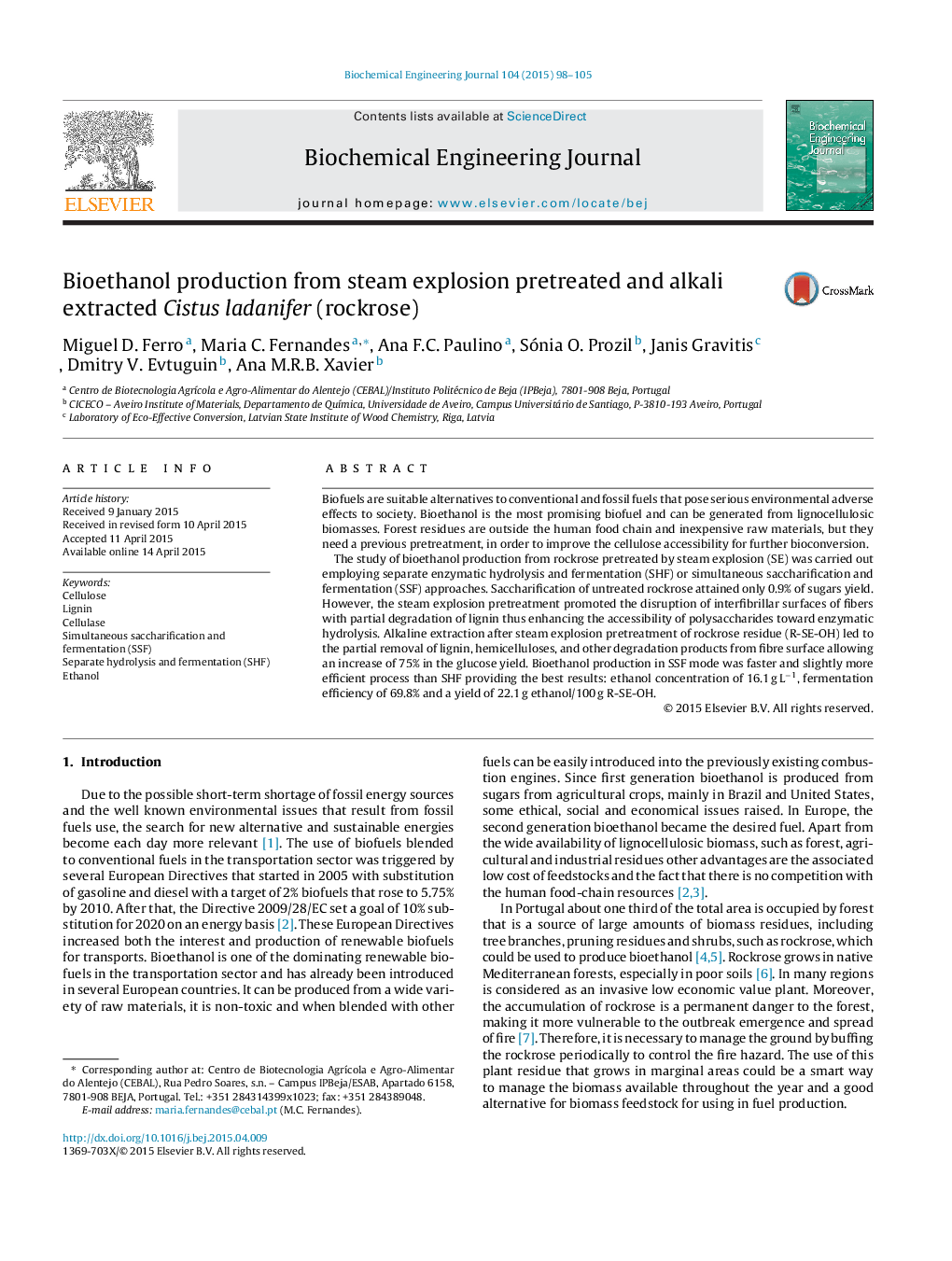| کد مقاله | کد نشریه | سال انتشار | مقاله انگلیسی | نسخه تمام متن |
|---|---|---|---|---|
| 2794 | 135 | 2015 | 8 صفحه PDF | دانلود رایگان |

• Steam explosion (SE) pretreatment enhances the enzymatic accessibility of cellulose.
• SE pretreatment disrupts interfibrillar surfaces and partially degrades the lignin.
• Alkali extraction after SE pretreatment increases lignin removal and saccharification.
• Simultaneous saccharification and fermentation (SSF) produced 16.1 g L−1 of ethanol.
• SSF is slightly more efficient than separate hydrolysis and fermentation process.
Biofuels are suitable alternatives to conventional and fossil fuels that pose serious environmental adverse effects to society. Bioethanol is the most promising biofuel and can be generated from lignocellulosic biomasses. Forest residues are outside the human food chain and inexpensive raw materials, but they need a previous pretreatment, in order to improve the cellulose accessibility for further bioconversion.The study of bioethanol production from rockrose pretreated by steam explosion (SE) was carried out employing separate enzymatic hydrolysis and fermentation (SHF) or simultaneous saccharification and fermentation (SSF) approaches. Saccharification of untreated rockrose attained only 0.9% of sugars yield. However, the steam explosion pretreatment promoted the disruption of interfibrillar surfaces of fibers with partial degradation of lignin thus enhancing the accessibility of polysaccharides toward enzymatic hydrolysis. Alkaline extraction after steam explosion pretreatment of rockrose residue (R-SE-OH) led to the partial removal of lignin, hemicelluloses, and other degradation products from fibre surface allowing an increase of 75% in the glucose yield. Bioethanol production in SSF mode was faster and slightly more efficient process than SHF providing the best results: ethanol concentration of 16.1 g L−1, fermentation efficiency of 69.8% and a yield of 22.1 g ethanol/100 g R-SE-OH.
Figure optionsDownload as PowerPoint slide
Journal: Biochemical Engineering Journal - Volume 104, 15 December 2015, Pages 98–105